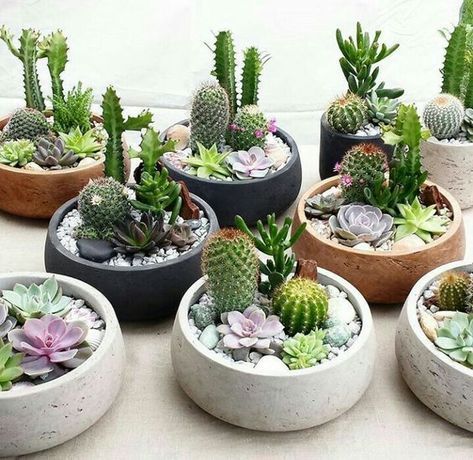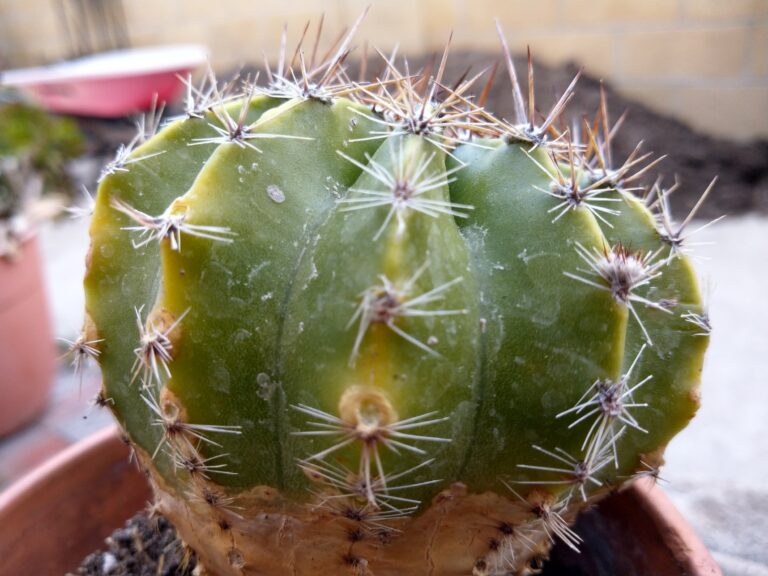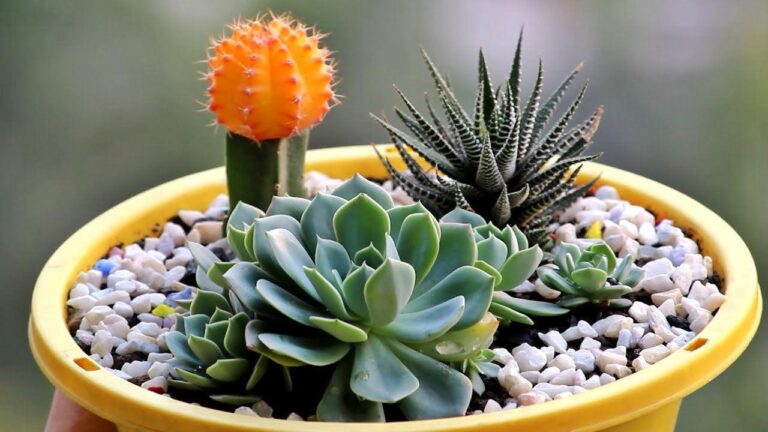Rainbow Cactus Succulent: A Complete Guide to Growing and Caring for This Vibrant Plant

Cacti and succulents are popular choices for indoor and outdoor plants due to their unique beauty, low maintenance, and ability to thrive in various conditions. One of the most eye-catching species is the rainbow cactus succulent. Known for its stunning, colorful appearance, this plant adds a pop of vibrant hues to any space. But caring for a rainbow cactus succulent requires some understanding of its needs and growing habits. In this comprehensive guide, we’ll explore everything you need to know about growing, maintaining, and enjoying the beauty of rainbow cactus succulents.
What is a Rainbow Cactus Succulent?
Defining the Rainbow Cactus Succulent
The rainbow cactus succulent (also known as Echinocereus rigidissimus) is a striking species native to the deserts of Mexico and parts of the southwestern United States. It gets its name from the colorful, often rainbow-like hues of its spines, which can range from pink and red to purple, orange, and even yellow.
This cactus typically grows in clumps or clusters and has ribbed, cylindrical stems that can reach heights of up to 12 inches. Despite its vivid appearance, the rainbow cactus is quite easy to care for, making it a great choice for beginner gardeners.
Unique Characteristics of the Rainbow Cactus
- Colorful spines: The most defining feature of this cactus is its spines, which emerge in vibrant colors.
- Small size: Unlike other cacti species, the rainbow cactus remains relatively small and compact.
- Flowering: During blooming season, rainbow cactus succulents produce beautiful pink, purple, or magenta flowers that add even more beauty to their already stunning appearance.
Growing Environment for Rainbow Cactus Succulent
To thrive, the rainbow cactus succulent requires conditions that mimic its native desert habitat. This means plenty of sunlight, well-draining soil, and minimal watering. Understanding how to provide these conditions will ensure your rainbow cactus grows healthy and vibrant.
How to Plant a Rainbow Cactus Succulent
Choosing the Right Pot
When planting a rainbow cactus succulent, selecting the right pot is essential for its growth. The pot should be wide enough to allow the roots to spread, but not too large, as this can lead to overwatering issues. Choose a pot that has drainage holes to prevent water from accumulating at the bottom. Clay or terracotta pots are ideal for succulents because they help with moisture evaporation.
Preparing the Soil Mix
Rainbow cactus succulents require a well-draining soil mix to thrive. You can create your own soil blend by mixing cactus potting mix with sand, perlite, or pumice. This will create a loose, fast-draining soil that helps prevent root rot and keeps the cactus healthy.
Here’s a basic soil recipe for rainbow cacti:
- 2 parts cactus mix
- 1 part coarse sand
- 1 part perlite or pumice
Make sure the soil mix is not too dense and provides enough airflow to the roots.
Planting Procedure
Once you’ve prepared your soil mix and selected the right pot, it’s time to plant your rainbow cactus succulent. Follow these simple steps:
- Place a small layer of gravel or rocks at the bottom of the pot for additional drainage.
- Fill the pot with the soil mix, leaving some space at the top.
- Carefully remove the cactus from its nursery pot, being mindful of its spines.
- Gently place the cactus into the new pot, ensuring that the root ball is sitting at the right depth.
- Fill in any gaps with soil mix, making sure the cactus is upright and stable.
Once planted, avoid watering the cactus immediately to give it time to settle into its new home.
Caring for Your Rainbow Cactus Succulent
Light Requirements
Rainbow cacti are sun-loving plants that thrive in bright, indirect light. They should be placed in a location that receives at least 4-6 hours of sunlight per day. If growing your cactus indoors, a south-facing window is ideal. If your cactus starts to lean toward the light or its colors start fading, this may indicate that it’s not getting enough sunlight.
Temperature and Humidity
Rainbow cacti prefer warm, dry conditions. They do best in temperatures between 70°F to 90°F (21°C to 32°C) during the growing season. However, they can tolerate slightly cooler temperatures, down to 50°F (10°C), during the winter months.
As a desert plant, the rainbow cactus is not fond of high humidity. Ensure that the environment is dry, with good air circulation around the plant. Avoid placing your cactus in areas with high humidity, such as bathrooms or kitchens.
Watering and Fertilizing
Rainbow cactus succulents have low water needs. Overwatering is a common mistake, and it can lead to root rot and other issues. Here are some watering guidelines:
- Water thoroughly only when the soil is completely dry.
- During the growing season (spring and summer), water your cactus every 2-3 weeks.
- In the dormant season (fall and winter), reduce watering to once a month.
As for fertilizing, rainbow cacti benefit from occasional feeding during the growing season. Use a diluted, balanced cactus fertilizer once a month to promote healthy growth.
Propagating Rainbow Cactus Succulent
Propagation by Offsets
One of the easiest ways to propagate your rainbow cactus succulent is through offsets. These are small pups that grow from the base of the cactus. To propagate, gently remove an offset from the main plant using a clean, sharp knife. Allow the offset to dry for a few days before planting it in a new pot with a well-draining cactus soil mix.
Seed Propagation
Another method of propagation is by seeds, though it is more time-consuming. Rainbow cactus seeds should be planted in a seed tray filled with a cactus soil mix. Keep the soil moist but not soaked, and ensure the seeds receive bright, indirect light. Seedlings can take several weeks to months to mature, so patience is key.
Tips for Successful Propagation
- Make sure to let the cuttings or offsets callous over before planting to avoid rot.
- Always use a well-draining soil mix to promote healthy root growth.
- Keep newly propagated plants in a warm environment with plenty of light.
Common Pests and Diseases Affecting Rainbow Cactus
Pest Problems
Rainbow cacti can fall prey to a variety of pests, including mealybugs, aphids, and spider mites. These pests can be harmful to the plant’s health, causing yellowing, wilting, and stunted growth. To deal with pests:
- Inspect your cactus regularly for signs of infestation.
- Use insecticidal soap or neem oil to treat the affected areas.
- If you spot mealybugs, gently wipe them off with a cotton swab soaked in rubbing alcohol.
Fungal and Bacterial Issues
Rainbow cacti are susceptible to fungal infections, especially when overwatered or planted in poorly draining soil. Root rot, caused by fungal pathogens, is a common issue that can affect the roots of your cactus.
To prevent fungal issues:
- Ensure proper watering practices.
- Provide adequate air circulation around your cactus.
- Use sterilized tools when pruning or handling your cactus to avoid introducing harmful pathogens.
Preventing Rot
Rot is a common problem for cacti, and it usually occurs when they are exposed to too much moisture. To prevent rot, follow the proper watering techniques, ensure your pot has adequate drainage, and always use well-draining soil.
Rainbow Cactus Succulent in Landscape Design
Using Rainbow Cactus in Xeriscaping
Xeriscaping is a landscaping method that focuses on water-efficient, drought-tolerant plants. The rainbow cactus succulent is an excellent choice for xeriscaping, as it thrives in dry conditions and requires minimal water. Its vibrant colors make it a standout feature in desert-inspired landscapes or low-maintenance gardens.
Container Gardening with Rainbow Cactus
For those who prefer container gardening, rainbow cacti are perfect for small spaces, patios, or balconies. They can be planted in decorative pots and used as accent pieces in any outdoor setting. The versatility of the cactus makes it suitable for various container types, from terracotta pots to modern, sleek containers.
Creating Cactus Gardens
If you love cacti, consider creating a cactus garden with various species, including the rainbow cactus. Combining different types of cacti with contrasting shapes, colors, and sizes will create an eye-catching, low-maintenance garden.
The Unique Coloration of Rainbow Cactus Succulent
How the Rainbow Colors Develop
The vibrant colors on the spines of the rainbow cactus are a result of pigmentation in the plant’s tissues. The red, pink, and purple hues develop when the cactus receives plenty of sunlight. Environmental stressors, such as temperature fluctuations, can also intensify these colors.
Color Changes Throughout the Year
The color of the rainbow cactus can vary throughout the year. During the growing season, the colors will be brightest, and during the dormant period, they may dull slightly. Temperature changes and the amount of sunlight the cactus receives can also affect its overall color.
Environmental Influence on Coloration
Rainbow cactus plants grown in bright, direct sunlight will show more intense colors. However, if they are placed in low light or overly shaded areas, the colors may appear faded or less vibrant.
Rainbow Cactus Succulent Flowering
Flowering Season
Rainbow cactus succulents bloom in late spring or early summer. The flowers appear as vibrant pink, purple, or magenta blooms, adding an extra pop of color to the cactus. The blooms are funnel-shaped and emerge from the crown of the cactus.
Encouraging Flowering
To encourage your rainbow cactus to bloom, ensure it receives adequate sunlight and proper care. If your cactus is not flowering, it may be due to insufficient light or improper temperature. By mimicking its native desert environment, you can encourage flowering and increase the likelihood of blooms.
Flower Care
Once the flowers have bloomed, they generally last for several days to weeks before wilting. After blooming, cut off any dead or faded flowers to maintain the health of the cactus. This also helps prevent the plant from using unnecessary energy on producing seeds.
Benefits of Growing a Rainbow Cactus Succulent
Aesthetic Appeal
Rainbow cacti are known for their stunning visual appeal. The combination of vibrant colors and unique shapes makes them a standout feature in any garden or home. The bright, colorful spines can be a conversation starter and a focal point in your plant collection.
Easy to Care For
Despite their striking appearance, rainbow
cactus succulents are relatively low-maintenance. They require minimal watering, are resilient to drought, and can thrive in various conditions. For those looking for a beautiful but easy-to-care-for plant, the rainbow cactus is an excellent choice.
Air Purification
Like many other succulent and cactus species, the rainbow cactus can help purify the air. It absorbs carbon dioxide and releases oxygen, improving the air quality in your home or office. It’s not only a beautiful addition to your space but a healthy one as well.
Common Myths about Rainbow Cactus Succulent
Misconception About Watering
One of the most common myths about cacti and succulents is that they don’t need water. While it’s true that they can tolerate drought, they still require occasional watering. Overwatering is the real problem, as it can lead to root rot. Always check the soil before watering.
Misunderstanding About Sunlight
Another myth is that cacti should be kept in the shade. On the contrary, rainbow cacti thrive in bright, indirect sunlight. A lack of sunlight can cause their colors to fade and stunt their growth.
Belief That Cacti Don’t Need Fertilizing
Some people assume cacti don’t require any fertilizing. While they don’t need it as often as other plants, rainbow cacti will benefit from a diluted, balanced fertilizer during the growing season. Too much fertilizer can harm the plant, so always use sparingly.
FAQs
1. How often should I water my rainbow cactus succulent? Water your rainbow cactus every 2-3 weeks during the growing season and reduce watering in the winter when the plant is dormant. Always check the soil first to ensure it is dry.
2. Can I grow a rainbow cactus indoors? Yes, rainbow cacti make excellent indoor plants as long as they receive enough light. Place them near a south-facing window or provide supplemental grow lights.
3. Do rainbow cacti need a lot of sunlight? Rainbow cacti thrive in bright, indirect sunlight. They need at least 4-6 hours of light each day to maintain their vibrant colors and healthy growth.
4. How can I propagate my rainbow cactus succulent? You can propagate your rainbow cactus by removing offsets or growing it from seeds. Offsets are easier and quicker to propagate.
5. Can my rainbow cactus succulent bloom indoors? Yes, rainbow cacti can bloom indoors if they receive enough light, warmth, and proper care. During the blooming season, you’ll see beautiful flowers in pink or purple hues.
Conclusion
The rainbow cactus succulent is a beautiful, low-maintenance plant that adds color and character to any home or garden. With proper care, including the right amount of sunlight, water, and soil, this vibrant cactus can thrive and produce stunning blooms year after year. Whether you’re new to succulents or an experienced gardener, the rainbow cactus is an excellent choice for anyone looking to add a unique and colorful plant to their collection.






